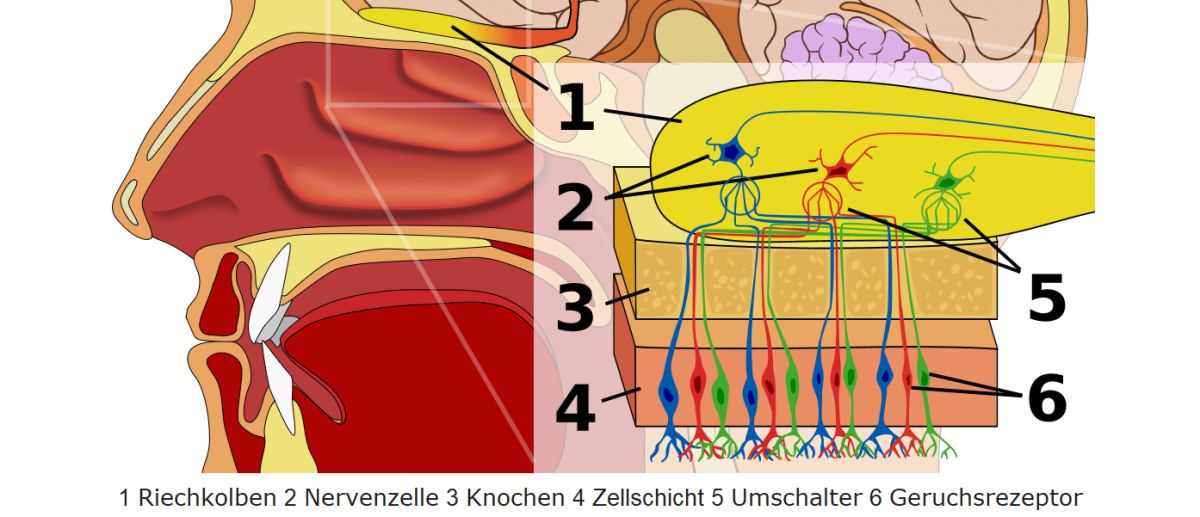Odour
Fragrances determine our lives, as the well-known gastronomy and wine expert Guy Bonnefoit writes in his book "Fascination Wine & Aromas": Human skin has a surface area of around two square metres and has up to 300 odour components. The odours also change depending on our physical condition and state of mind. A dog can distinguish precisely between people who are well-disposed towards it and those who are fearful. Every mood or state of mind has its own odour - so you can also smell the "happy" state. An experienced country doctor reports that he is able to recognise certain illnesses when he enters a sick room. Every illness develops its own typical "odour". Diabetes smells fruity, diphtheria sweet, typhoid fever like baked bread and gout like a lion's cage or pet shop.

Behavioural biology
The sense of smell is the ability to perceive gaseous substances or substances dissolved in water on a molecular level. Like taste, odour is one of the chemical senses. This ability has only been proven in vertebrates and insects. More than all other sensory organs, the perception of odours is very emotionally charged. They are immediately categorised as pleasant (fragrant) or unpleasant (smelly). In behavioural biology, smell has a special significance with regard to food intake, reproductive behaviour and recognition of enemies. Odours stimulate appetite and the production of digestive juices.
The statement "you can't smell someone" is much more than just a play on words. Odour is unconsciously very important when choosing a partner. Odours also play an important role in memory and associative brain processes. Odours are perceived olfactorily via the yellow olfactory mucosa (approx. 2 x 5 cm²) in the uppermost part of the nasal cavity directly below the brain. However, odours are not only conducted and perceived nasally (orthonasally, pronasally) when inhaling via the two nostrils, but also retronasally when exhaling from the oral cavity via the nasopharynx to the olfactory mucosa. It depends on the amount of an odour when it is perceived. This is known as the perception threshold (limit).

Voices of our members

The wein.plus encyclopaedia is a comprehensive, well-researched reference work. Available anytime and anywhere, it has become an indispensable part of teaching, used by students and myself alike. Highly recommended!
Dominik Trick
Technischer Lehrer, staatl. geprüfter Sommelier, Hotelfachschule Heidelberg